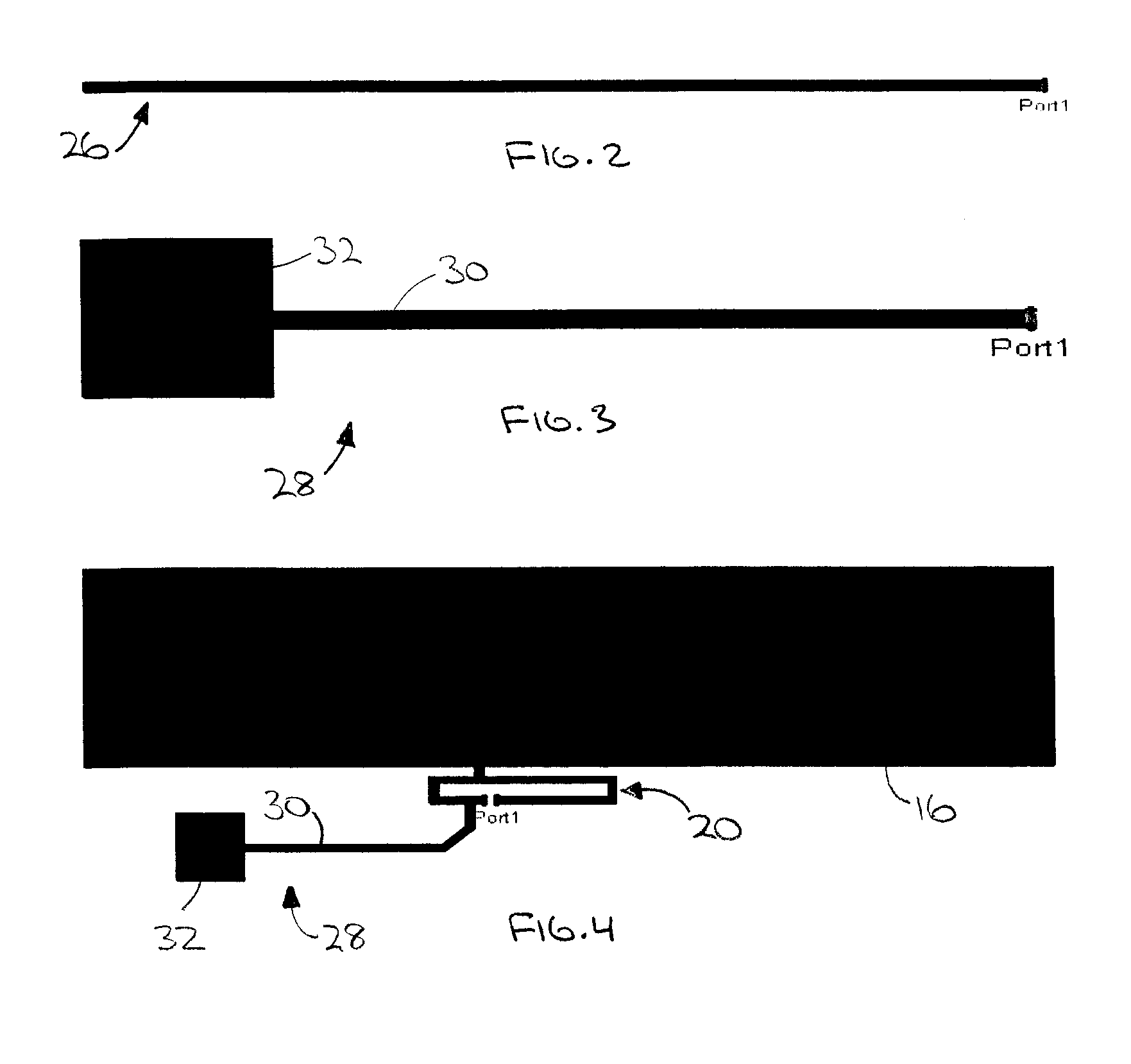Virtual short circuit for providing reference signal in RFID tag
a virtual short circuit and reference signal technology, applied in the field of virtual short circuits, can solve the problems of inefficient electromagnetic radiators and receptors, limited useful range of operation, and significant disadvantage in short read distan
- Summary
- Abstract
- Description
- Claims
- Application Information
AI Technical Summary
Benefits of technology
Problems solved by technology
Method used
Image
Examples
Embodiment Construction
, below.
BRIEF DESCRIPTION OF THE DRAWINGS
[0016] The following drawings form part of the present specification and are included to further demonstrate certain aspects of the present invention. The figures are examples only, and do not limit the scope of the invention.
[0017]FIG. 1 is an isometric view of an RFID tag in which a virtual short circuit uses a stepped impedance transformation from an open circuit to provide a reference signal to an IC.
[0018]FIG. 2 is plan view of a quarter wavelength transmission line transformer.
[0019]FIG. 3 is a plan view of a stepped impedance transformer including first and second transmission lines having different lengths and widths.
[0020]FIG. 4 is a plan view of an RFID tag including the stepped impedance transformer of FIG. 3 and a matching circuit including a shorting stub.
[0021]FIG. 5 is a plan view of an RFID tag including an alternative embodiment of the stepped impedance transformer.
[0022]FIG. 6 is a plan view of an RFID tag including a...
PUM
 Login to View More
Login to View More Abstract
Description
Claims
Application Information
 Login to View More
Login to View More - R&D
- Intellectual Property
- Life Sciences
- Materials
- Tech Scout
- Unparalleled Data Quality
- Higher Quality Content
- 60% Fewer Hallucinations
Browse by: Latest US Patents, China's latest patents, Technical Efficacy Thesaurus, Application Domain, Technology Topic, Popular Technical Reports.
© 2025 PatSnap. All rights reserved.Legal|Privacy policy|Modern Slavery Act Transparency Statement|Sitemap|About US| Contact US: help@patsnap.com



